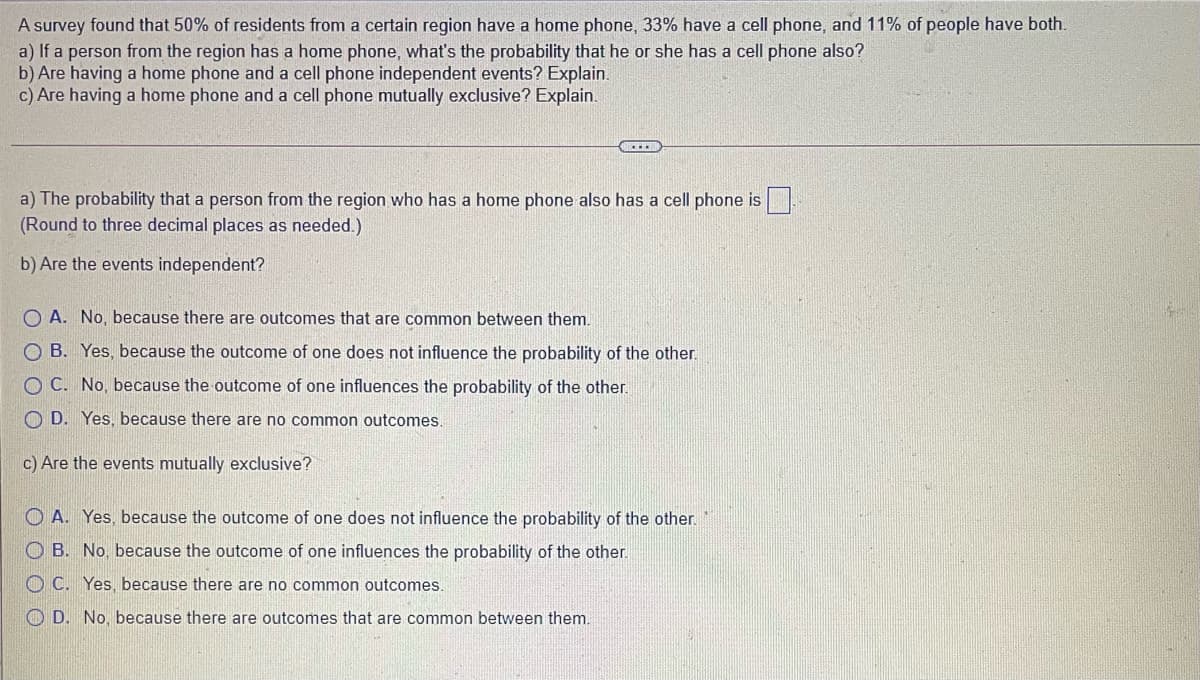them.
Chapter8: Sequences, Series,and Probability
Section8.7: Probability
Problem 4ECP: Show that the probability of drawing a club at random from a standard deck of 52 playing cards is...
Related questions
Question
100%

Transcribed Image Text:A survey found that 50% of residents from a certain region have a home phone, 33% have a cell phone, and 11% of people have both.
a) If a person from the region has a home phone, what's the probability that he or she has a cell phone also?
b) Are having a home phone and a cell phone independent events? Explain.
c) Are having a home phone and a cell phone mutually exclusive? Explain.
a) The probability that a person from the region who has a home phone also has a cell phone is
(Round to three decimal places as needed.)
b) Are the events independent?
O A. No, because there are outcomes that are common between them.
O B. Yes, because the outcome of one does not influence the probability of the other.
O C. No, because the outcome of one influences the probability of the other.
O D. Yes, because there are no common outcomes.
c) Are the events mutually exclusive?
O A. Yes, because the outcome of one does not influence the probability of the other.
O B. No, because the outcome of one influences the probability of the other.
O C. Yes, because there are no common outcomes.
O D. No, because there are outcomes that are common between them.
Expert Solution
This question has been solved!
Explore an expertly crafted, step-by-step solution for a thorough understanding of key concepts.
Step by step
Solved in 3 steps with 2 images

Recommended textbooks for you

